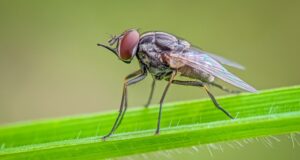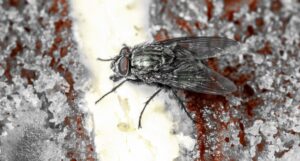 Stable flies are a common pest in many homes and agricultural environments. They resemble house flies but are differentiated by their sharp mouthparts, which they use to bite and consume blood. Even though these pests might only seem like minor annoyances, it’s important to learn more about their potential risks and the importance of effective pest management techniques.
Are Stable Flies Dangerous?

Yes, stable flies can be considered dangerous due to several reasons. While they do not transmit diseases directly to humans, their painful bites can lead to discomfort, irritation, and potential secondary infections if not properly treated. In addition, stable flies can cause stress and reduced productivity in livestock, leading to economic losses for farmers.
The Dangers of Stable Flies
Despite their small size, stable flies can pose significant health risks to humans and animals alike. Here are some reasons why these pests are considered dangerous:
- Disease Transmission: Stable flies are known to transmit various diseases, including equine infectious anemia, anaplasmosis, and leucocytozoonosis among livestock animals. They can also transfer pathogens from animal hosts to humans, potentially leading to serious health complications.
- Painful Bites: Unlike house flies that primarily feed on decaying organic matter, stable flies bite animals and humans to obtain blood meals. These bites are not only painful but can also lead to skin irritations, allergic reactions, and secondary infections.
- Economic Impact: In agricultural settings, stable flies can cause significant economic losses by reducing livestock productivity and increasing veterinary costs. Pest infestations can lead to decreased weight gain, reduced milk production, and overall poor animal health.
Preventive Measures

Effective methods for controlling pests must be implemented to reduce the risks posed by stable flies. The following tips will help you prevent this pest.
- Sanitation Practices: Proper trash management and sanitation can help reduce stable fly breeding habitats. Regularly clean up animal faeces, spilt feed, and other organic matter that could attract and sustain stable fly populations.
- Biological Control: Using parasitic wasps, which are natural predators of stable flies, can help in controlling their population. Additionally, stable fly larvae can be kept from maturing into adults by using pesticide sprays in breeding sites.
- Physical Barriers: Installing screens on windows and doors, using fly traps, and applying insecticidal sprays in and around buildings can help prevent stable flies from entering homes, barns, and other structures.
Conclusion
Stable flies may appear small, but their risks must not be ignored. By understanding the risks associated with these pests and implementing proactive pest control measures, you can safeguard your home, animals, and environment from the harmful effects of stable flies. If those preventive measures are taken, seek help from pest control services to get rid of stable flies.
The post Are Stable Flies Dangerous? appeared first on Empire Pest Control London.

Content mobilized by FeedBlitz RSS Services, the premium FeedBurner alternative. |